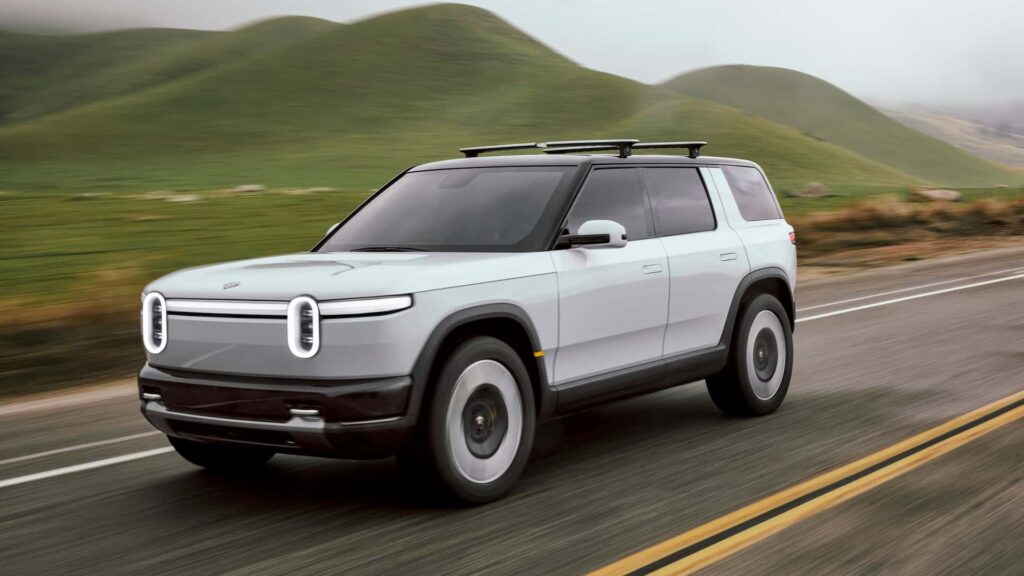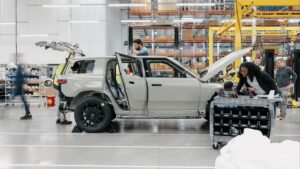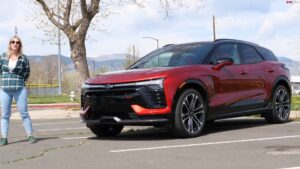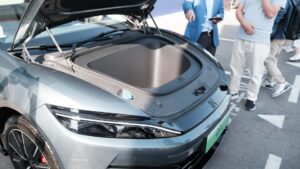
After landing on the scene a few years back with a pair of high-end models and a commercial van, Rivian is looking to join the big leagues with its next act: the R2 crossover.
This is Rivian’s answer to the extremely popular Tesla Model Y and, if all goes well, its ticket to long-term viability. But before any of that can happen, the electric vehicle startup will need to actually start building the thing. Rivian founder and CEO R.J. Scaringe, along with other executives, gave a progress update on the critical model during an earnings call this week.
“When we look at the R2 program, this is well underway,” Scaringe said on Tuesday.
He said Rivian is producing R2 “validation builds” at “pilot scale.” Rivian said in its letter to shareholders this week that the prototype assembly line is using “mostly production tooling,” meaning that the manufacturing machinery is almost finalized. Scaringe went on to explain what exactly validation builds are and why they matter.
“Those vehicles are critical for not just validating the vehicle itself from an engineering and design point of view, but also validating our suppliers and making sure that their processes are robust,” he said.

Rivian R2 validation builds
Photo by: Rivian
He also shared photos on X of a handful of partially assembled R2 prototypes, and of the R2’s “Maximus” drive unit installed on an axle.
Rivian aims to put the R2 into production in the first half of 2026, and it reiterated that timeline in Tuesday’s update to investors. Initially, the startup planned to build the R2 from the get-go at a brand-new plant in Georgia. Now the plan is to first expand its existing factory in Normal, Illinois, to accommodate production of up to 155,000 R2s annually.

Rivian R2 validation builds
Photo by: Rivian
According to Rivian COO Javier Varela, the building that will house the expanded paint shop and assembly line is complete, “and now we start implementing the processes inside.”
He said all the new manufacturing equipment for the R2 has been sourced, and that it will undergo testing and calibration at suppliers before being shipped out.
The bigger and more steeply priced R1S SUV and R1T pickup landed Rivian on the map as a competent maker of rugged, capable and high-tech EVs. The big question for Rivian, and any EV startup, is whether it can turn exciting products into a sustainable business. It expects to lose between $1.7 and $1.9 billion this year.

Photo by: Patrick George
As good as the R1T and R1S are, they’re too expensive to have mass appeal and their sales appear to have stopped growing. Rivian’s deliveries were essentially flat in 2024, at 51,579 units. It needs far more scale to spread out its costs and become a profitable business. That’s where the R2 comes in.
The compact crossover will cost $45,000—a price that Scaringe said won’t change due to tariffs—about half the going price of a current Rivian. That should unlock a whole new set of buyers, drive the company’s next phase of growth and put it on a clearer path to making more money than it spends. Between a blockbuster deal with the Volkswagen Group and the other liquidity it has on hand, Rivian says it has the runway to ramp up production of the R2 and a subsequent model, the R3.
The company has started to turn a gross profit. That is, its vehicles are profitable when you only count the costs that go directly into making them. It expects to turn a profit sooner with the R2, CFO Claire McDonough said.

“As we look forward to launching R2 we expect a faster path to profitability as compared to R1,” she said.
One thing that should help there: sourcing batteries in the U.S. to avoid President Trump’s wide-ranging and unpredictable tariffs. Scaringe said on Tuesday that Rivian will initially source the R2’s LG batteries from South Korea, before getting them from an Arizona-based facility by early 2027.
“So that’s outstanding for us in terms of the long-term cost structure for R2,” Rivian’s CEO said.
There’s still a long way to go before the critical R2 hits customer driveways. For now, Rivian says it’s on track.
Got a tip about Rivian or the wider EV world? Contact the author: Tim.Levin@InsideEVs.com



